No athletic ability passed down to me
I have never given much thought to athletics in my family history. I personally have no skill in that area whatsoever. I’ve never met a sport that couldn’t make me cry. I was always picked last in gym class and I don’t blame the people doing the picking. I hated playing dodge ball (which we played every single day in sixth grade) and always tried to get hit right away so that I could be out. In high school, my normally patient friend, who was a member of the girl’s golf team, took me along one day when she practiced. She was so frustrated with me that she picked up my ball and threw it so that it could get closer to the hole. That is the only hole of golf I’ve ever attempted in my life. In college my PhyEd major roommate took me jogging one morning. (Yes, it was quite funny that I had a PhyEd major friend.) After several blocks she took me back to the dorms and told me that I really didn’t even know how to run. On my several attempts at skiing I found myself sitting in the middle of the hill wondering how I would ever get to the bottom, followed by being reassured it was fine if I just spent the rest of the ski trip sitting in the chalet saving a table for everyone else. When I was coerced into playing co-ed softball with a work team, it was common for the male batter behind me to catch up with me and yell at me to run faster so that he could make it home. I’m not sure if I was ever passed, but I bet it crossed their minds. Oh, and the only reason I was on a base was because of the rule that said that if a male batter was walked, the female behind him got a walk too. Mind you, I even enrolled in the challenging honors program in college because it would negate the requirement to get physical education credits.
I’ve been a good spectator through the years, but please, don’t throw the ball to me! With my long history of bad sports experiences, I’ve never put much thought into having sports traditions in the family. Sure, I have a nephew who was born with a ball in his hand who could dribble a basketball before he could talk. And there is no one else in the family as inept as me when it comes to athletic ability, but, I’ve never thought too much about sports being passed down our family tree.
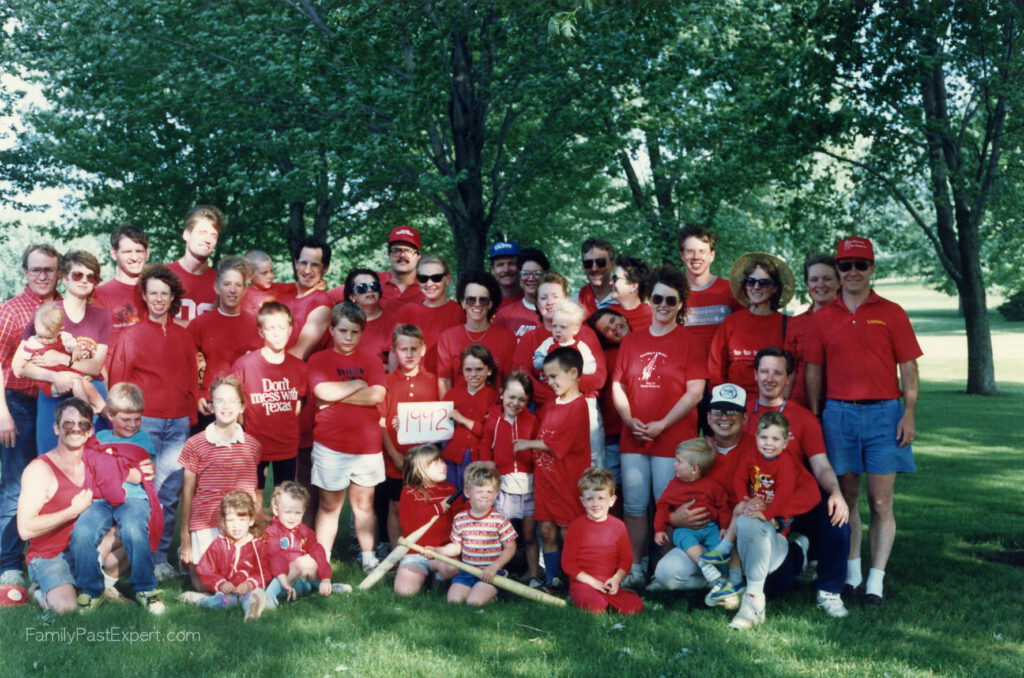
Curling
My oldest son recently had an opportunity to try curling for the first time. For those who are not familiar, curling is a sport played on ice where players slide stones towards a target area. It was invented in Scotland and has been played since medieval times. You can catch it in the winter Olympics, and, if you happen to live somewhere like Canada or Wisconsin, you might get a chance to play or see it played. The game involves teams of four taking turns sliding heavy “rocks” (38 to 44 pounds of polished granite) across the ice with the goal of getting their rock (a.k.a. stone) the closest to the center of a target. Each team throws a total of eight stones in each round. One player throws the stone down the ice and other players, called “sweepers,” use brooms to change the ice in the path of the stone so that stone speeds up or slows down or takes a different path. The sweepers can’t actually touch the stone with their brooms or it is a foul (“burning the rock”). But your team’s stone can knock the other team’s stone out of the target area. So there is lot of strategy regarding where to place your stones.
The four members of each curling team have distinct roles:
- The lead throws the first two rocks and then sweeps the next six.
- The second throws the third and forth stones and sweeps the first two rocks and the final four.
- The third, a.k.a. the mate or vice, throws the fifth and sixth rocks and participates in sweeping. It is the third’s responsibility to set up things for the final shots and to discuss strategy of the final two stones with the skip.
- The skip is the captain of the team. The skip comes up with the strategy of the team and tells the other players where to throw their stones and when to sweep. The skip also throws the last two stones.
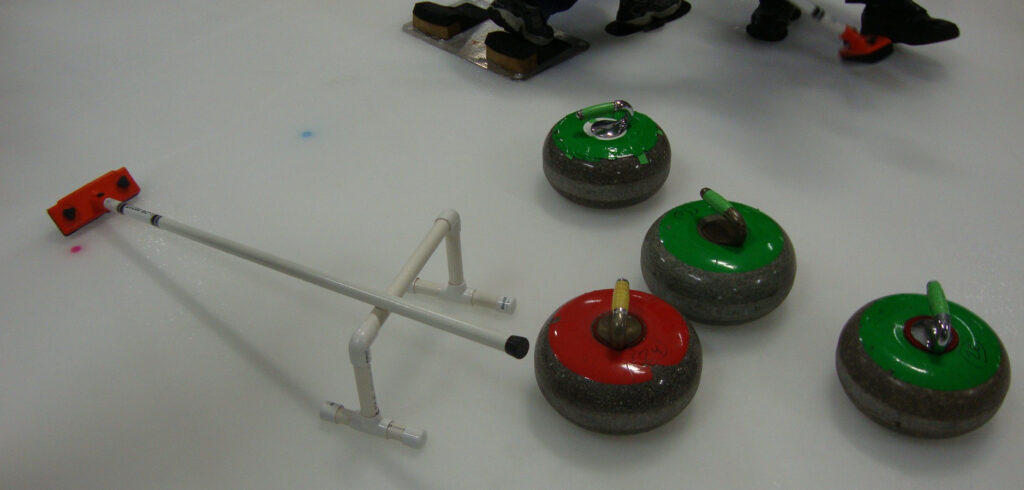
Other curling terminology:
- Team names. Teams are often named for the skip. So if Krueger was the skip, then the team might be called “the Krueger rink.”
- End. An end is like an inning or quarter in other sports. There are usually either eight or ten ends in each game. Though, sometimes the game is modified to have only six.
- Hammer. The last rock of an end.
- Hurry hard. A command that the sweepers are given by the skip or the third to start sweeping.
- Sheet. The frozen surface where the game is played (think ice rink).
So you may be wondering why I am giving you a curling lesson and what that has to do with family history. Well, if the Krueger family were to be known for a sport, it would be curling.
Wausau Curling Club
It started with Norman.
Curling started in Wausau, Wisconsin in the early 1920s or maybe earlier. Early curling games were played on the Wisconsin River’s west channel just below the Curtis woodworking plant. The Wausau Curling club was officially organized in 1925. One of the club’s founders arranged for one of the county fair buildings at the county park to be used in the winter for curling sheets. By the 1940s, the club was growing to a point where those facilities were no longer sufficient so the county built a new multi-purpose building adjacent to the existing club which added four sheets, walkways and a warning room. During the summer of 1951, the club installed ice making equipment so curling could be done even when the weather got warm. In 1976, the Wausau Curling Club even hosted the United States Men’s Curling Championship. Those early facilities lasted a long time. It wasn’t until 2012 that a new curling club was built – it is one of the largest curling specific facilities in the US.
Norman Krueger graduated from Wausau High School in 1923 and soon after was a young professional working in Wausau. Through the years, Norman was very active in raising his family and in many community affairs. But, he also had another pastime…curling! He was a member of the Wausau Curling Club and spent a fair amount of time at the rink. I understand that somewhere there exists a box of metals that Norman won during his curling days.
State High School Champions
Jim and Chuck.
Having grown up with a dad who curled, it was natural that Norman’s sons Jim and Chuck got involved as well. They were both members of the Wausau High School curling team and both advanced to “skipping” their own teams. They had a lot of success. The Krueger rink, skipped by Jim Krueger won the State Curling Championship his senior year.
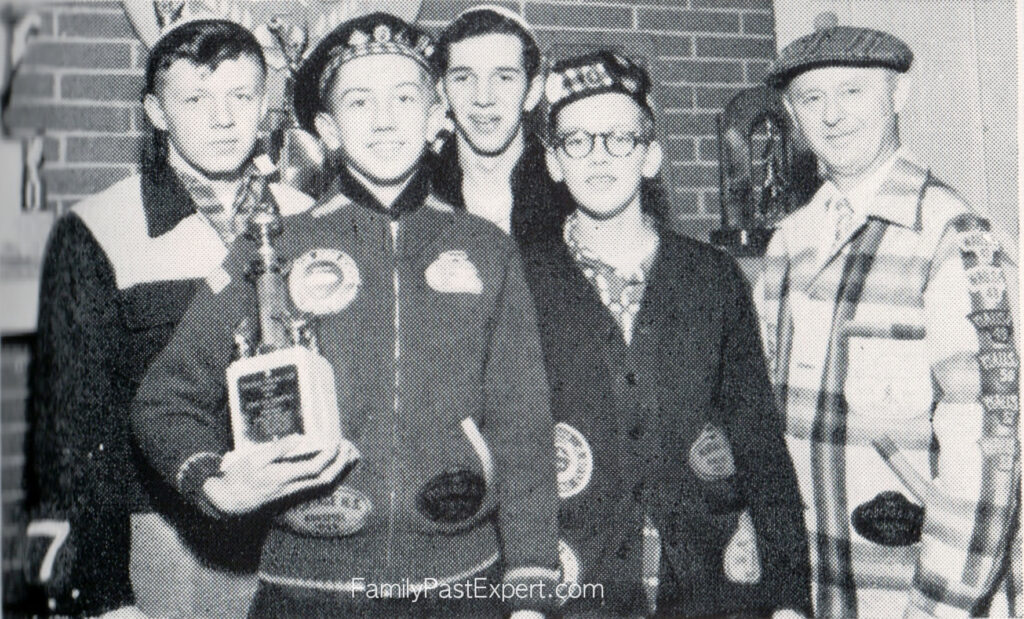
Newbie Bonspiel
Now, fast forward to 2016. CJ, a great-grandson of Norman, grandson of Jim, and grand-nephew of Chuck, got an invitation to participate in the Newbie Bonspiel at the Eau Claire Curling Club. Always one to cheerfully try something new, CJ signed up for the event which paired experienced curlers with rookies. With CJ playing lead, they had great success. They won their first game Saturday morning. They then had to socialize and drink beer all day until the next game in the evening – that’s perhaps a good way to hook the newcomers to the sport. They won the Saturday evening game and came back Sunday for more. Unfortunately CJ’s team got knocked out in the semi-finals, but it was still a great introduction to the sport. He might not commit to league play, but will definitely play again if he has a chance.
I can’t take credit for the curling gene as it was passed down the male line.
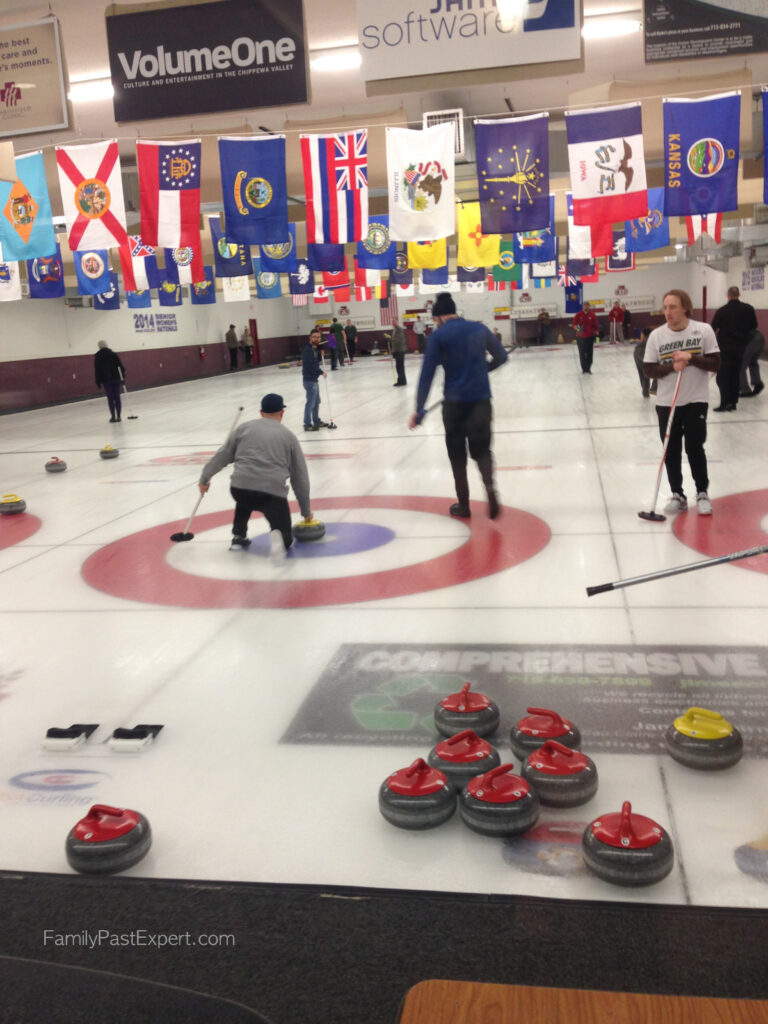
Other Athletes in the Tree
There are a few other known athletes hidden in the branches of the family tree. Another paternal great-grandfather of my sons, Floyd Phillips, played semi-pro baseball in Canada. Floyd and his brothers farmed during the summer months in Canada. While there, Floyd and his brother Albert were members of the Dakota Baseball team. They left an often told family story about this. Floyd played catcher and Albert was pitcher. In baseball, one of the more difficult plays to handle is the bunt. It is told that Floyd and Albert practiced and practiced and perfected a play to conquer bunts. Usually the ball ends up somewhere between the catcher and the pitcher. Floyd and Albert figured out that with Albert’s stronger arm, he had a better chance at getting the out at first base. If Floyd got to the ball first, he would throw it to Albert who could fire it to first base. Their play would have been a success, if only they had shared their idea with the first baseman. Instead, during the real game, they executed perfectly but the first baseman did not see the throw to the pitcher and so his attention remained fixed on the catcher. As he patiently waited for Floyd to throw the ball, it whizzed right past his head.
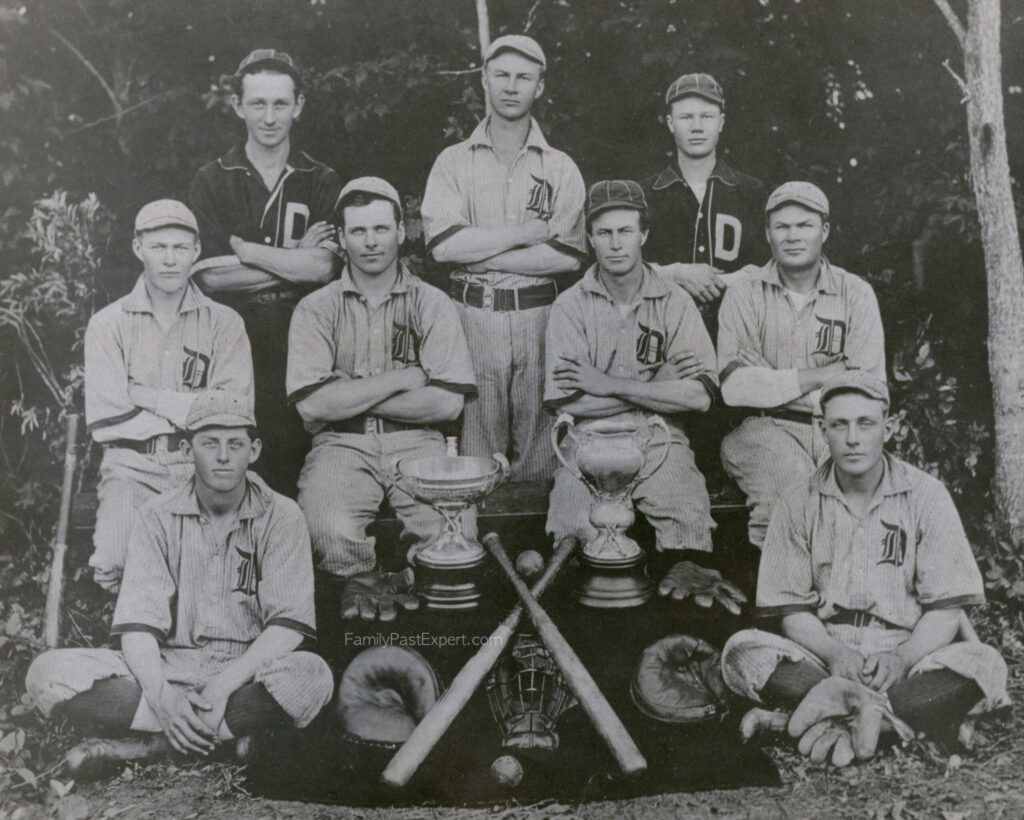
And my mother-in-law and boys’ grandmother, Coralee (Phillips) Krueger, was quite an athlete in her high school days and way beyond…
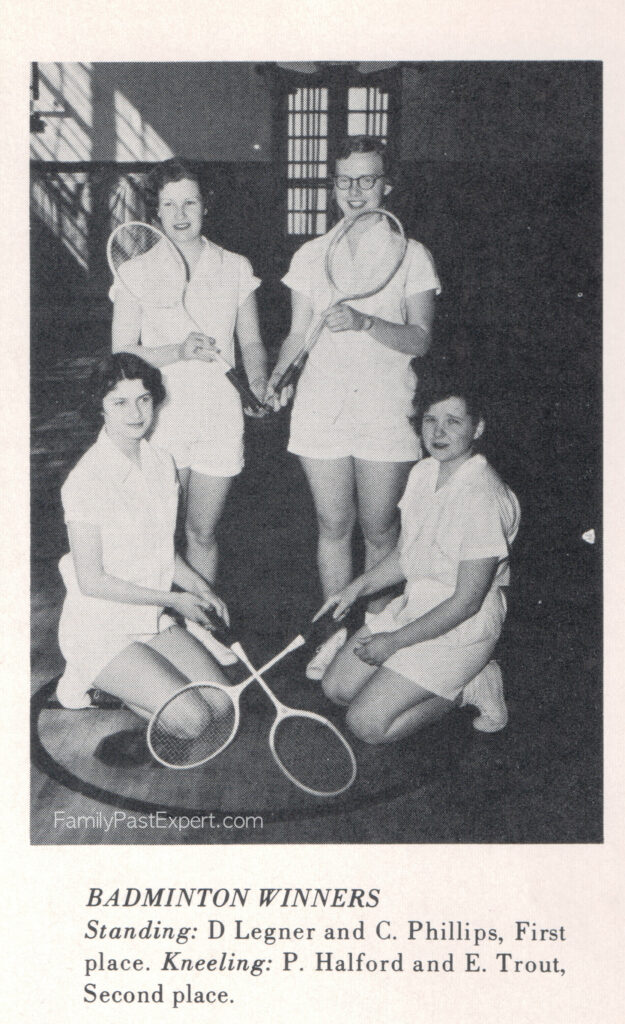
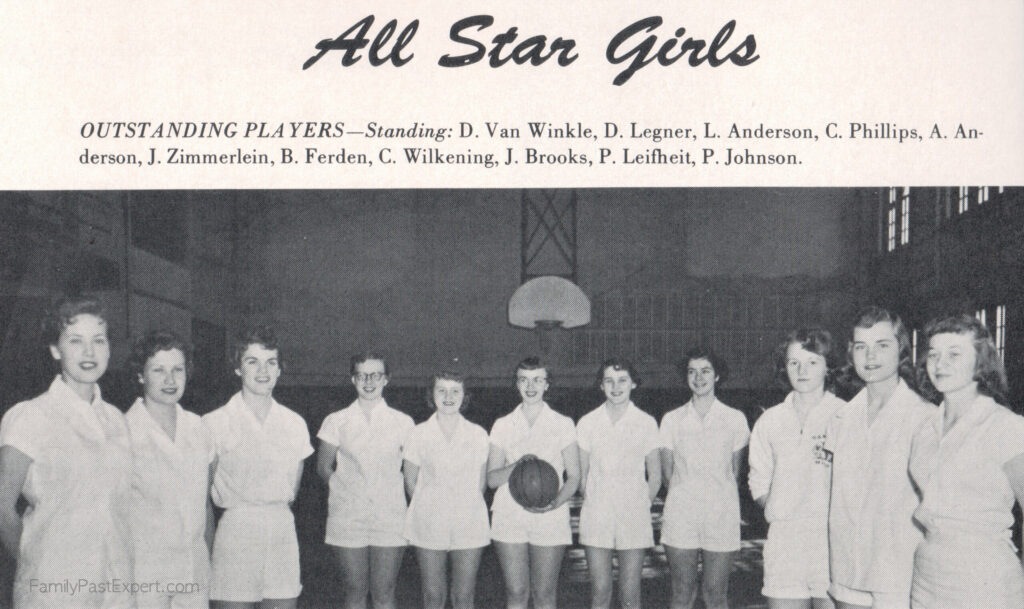
And still, none of the sports DNA came from me.
But wait…
My great grandfather, Harry Fawcett played semi-pro baseball (then called “base ball”) in Iowa. I don’t have any great stories or photos, but at the time of his young adulthood, at the end of the 19th century, it was a popular recreational game. Baseball players fielded the ball barehanded until the 1890s and when gloves first came into use they were very small in size and lacked webbing between the thumb and forefinger. It wasn’t until the 1920s, long after Harry’s baseball days, that gloves had preformed pockets.
And my dad was a Blooming Prairie Blossom. He played on both the football and basketball teams in high school.
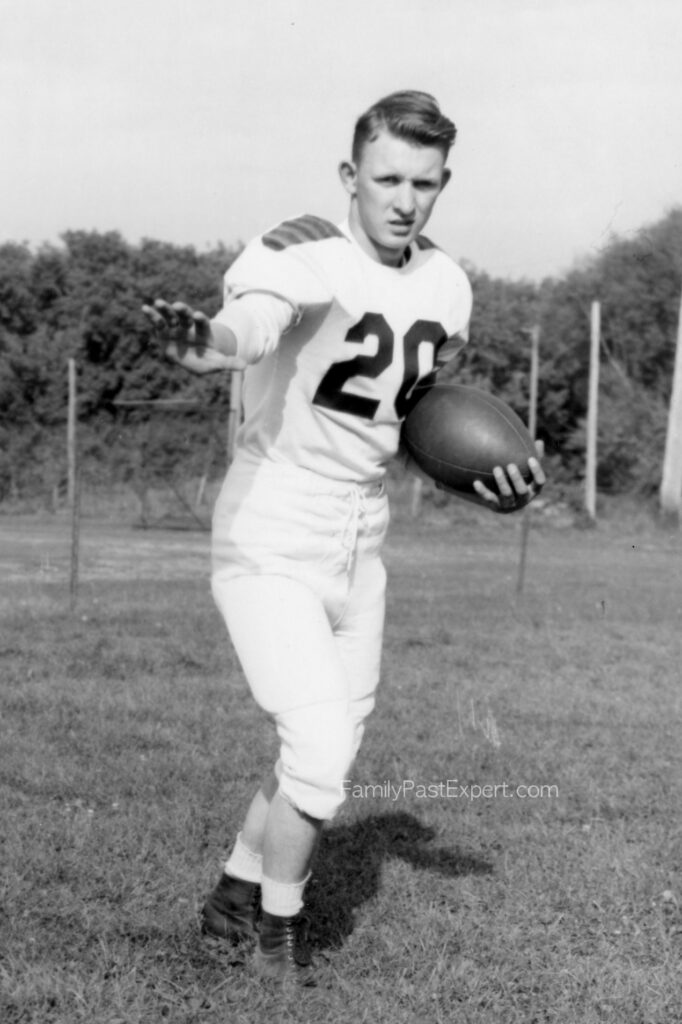
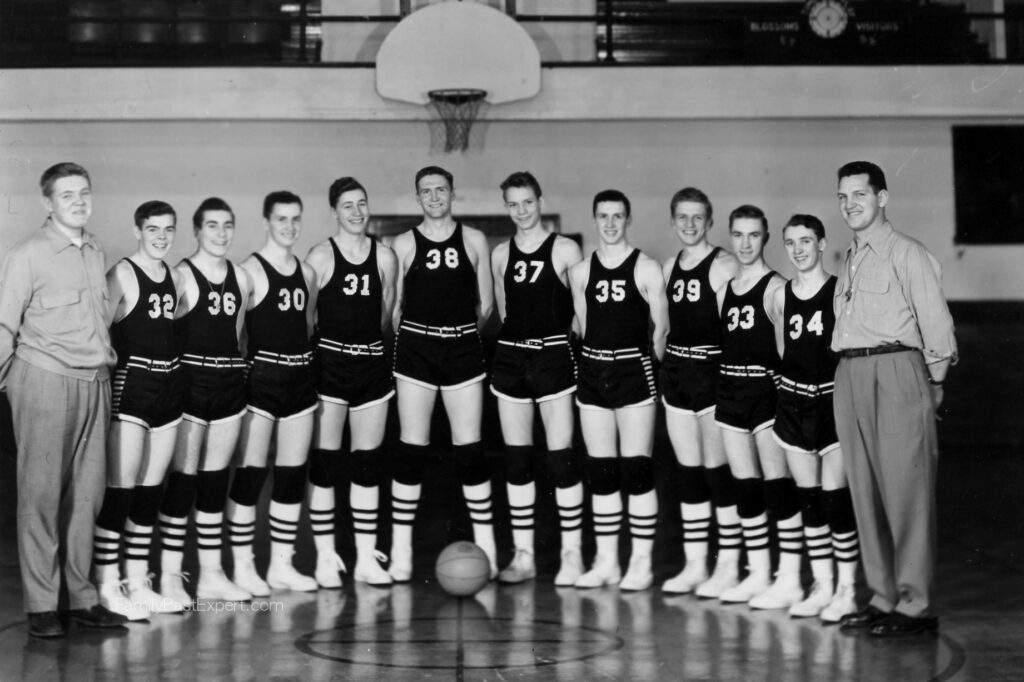
But, unfortunately Dad’s abilities must have skipped a generation and passed over me because I have never been able to dribble or shoot a basketball, and well, I’m a girl, so I was never even forced to play football. But, there are a few athletes in my lineage, so maybe I did contribute a tiny bit to the overall athleticism of my boys — a very, very little. I really can’t take credit for the curling gene, but I think it is very special for the Krueger curling tradition to be experienced by the younger generation. What a great way to connect the generations!
Sources:
“Club History.” Wausau Curling Rocks. Web. 8 March 2016. http://wausaucurling.org/index.php/about/history.
“Curling.” Wikipedia. Web. 6 March 2016. https://en.wikipedia.org/wiki/Curling.
“Diamond Reflections: The Ames Nine.” Iowa State. Web 8 March 2016. http://www.add.lib.iastate.edu/spcl/exhibits/baseball/ames_nine.htm.
“Wausau Curling Club.” Wikipedia. Web. 6 March 2016. https://en.wikipedia.org/wiki/Wausau_Curling_Club.
Weeks, Bob. “Curling For Dummies.” For Dummies, a Wiley Brand. Web. 6 March 2016. http://www.dummies.com/how-to/content/curling-for-dummies-cheat-sheet.html.
World Curling Federation. Web. 6 March 2016. http://www.worldcurling.org/home.


Leave a Reply